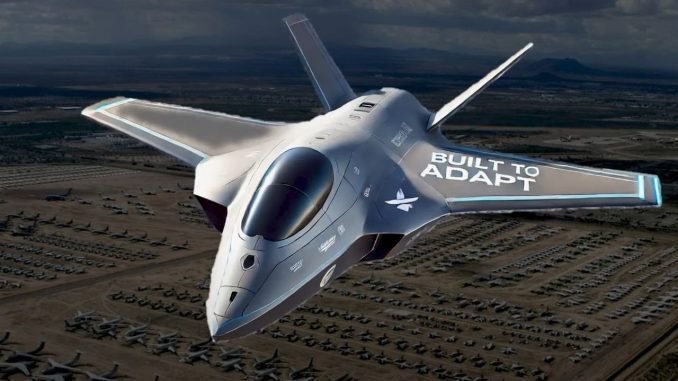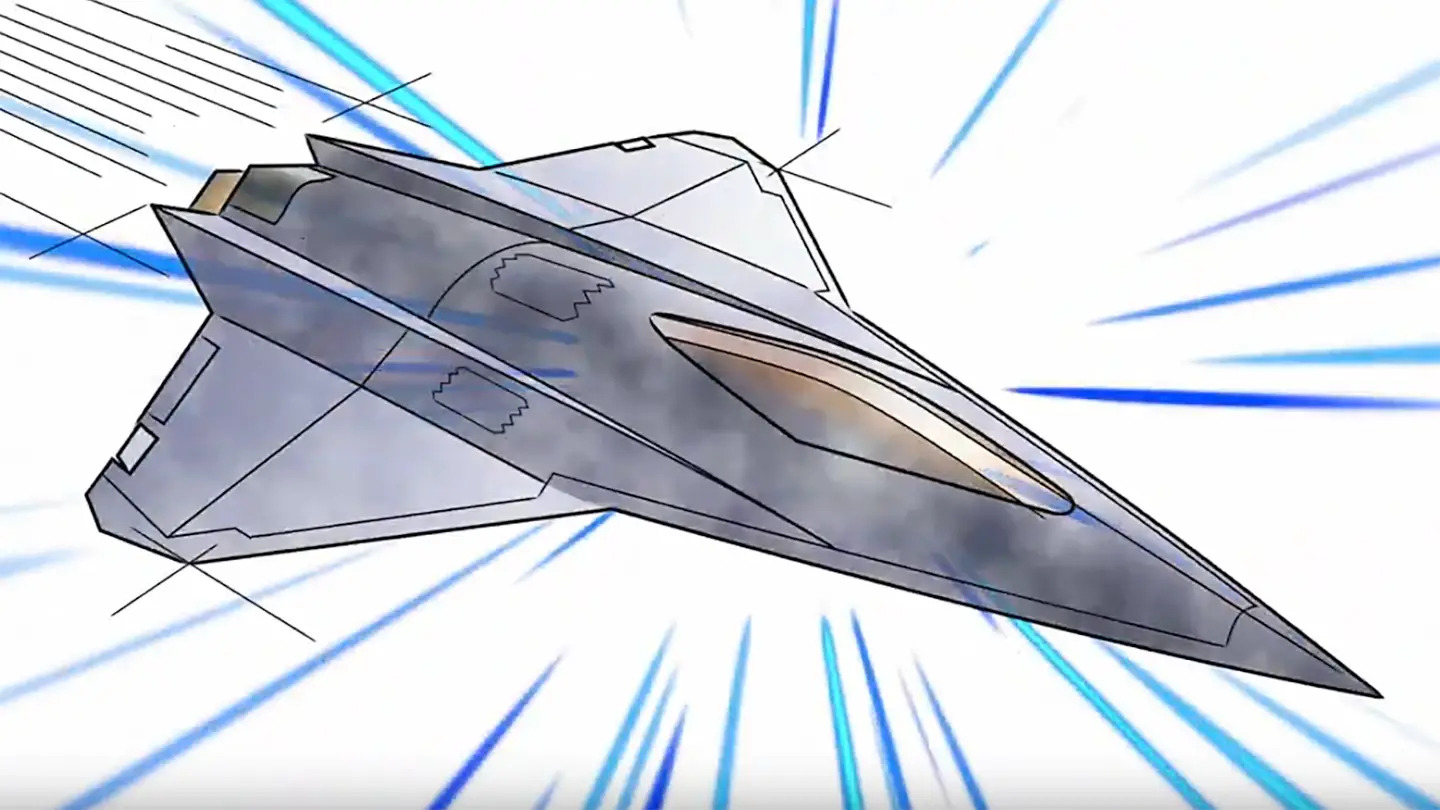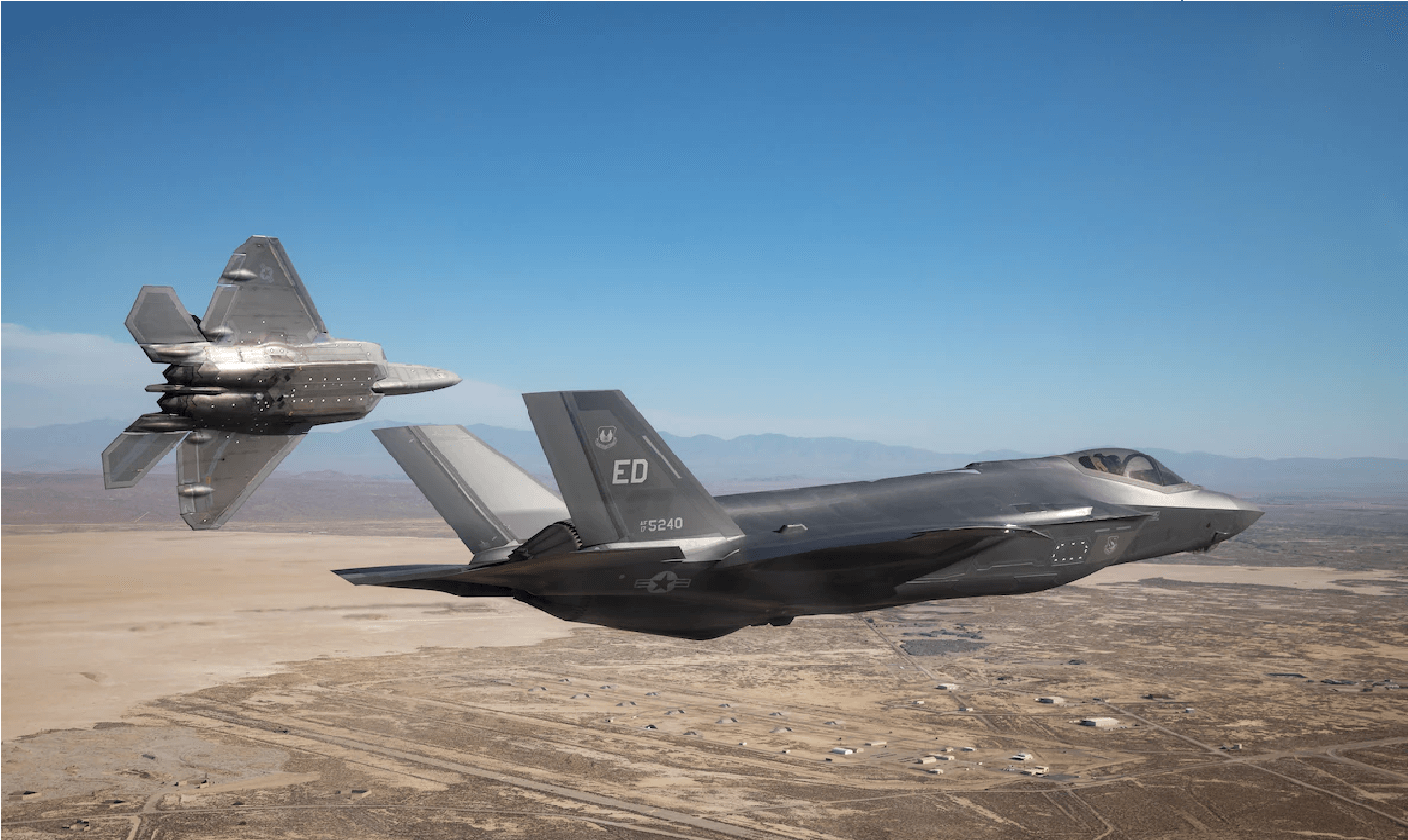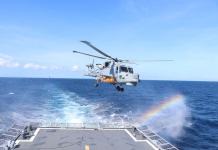Amid the prevailing uncertainty regarding the US Air Force’s Next Generation Air Dominance (NGAD) program, a high-ranking US official has introduced a concept for a conceptual light stealth fighter jet.
The Chief of Staff of the US Air Force (USAF), Gen. David W. Allvin, illustrated the supposed ‘light fighter jet concept’ during his presentation at the Global Air and Space Chiefs Conference held in London last month. The conference was attended by a host of defense industry executives. This was first reported by The Aviationist.
The new light fighter concept, though not referred to as such by Allvin, was accompanied by calls from the General to shift the development of aircraft from the philosophy of “built to last” to “built to adapt.”
As per the report, the General did not mention the NGAD or the ‘light fighter’ in his address.
The USAF has not acknowledged any such program. The concept that appeared in General Allvin’s presentation is purely notional. However, the design bears an uncanny resemblance to the F-35 Lightning II stealth aircraft, with some experts asserting that it appears to be a scaled-down version of the fifth-generation aircraft.
This notional fighter is reportedly a single-engine aircraft that appears to have been designed with low observability in mind. Except for the air intakes, which are oriented backward on this aircraft while being swept forward on the Lightning II, the wings and V-tail of this aircraft are identical to those of the F-35.

The idea of a light fighter has been around for a while. Several officials have floated the idea of developing an all-new light fighter (4th or 4.5th generation) for low-end threats, while others have proposed building a light fighter variant of sixth-generation aircraft.
For instance, earlier, the USAF stated that it was considering developing an F-7 light fighter jet derived from the T-7 Red Hawk trainer to replace the F-16 C/D Viper fleet.
In 2021, retired General James M. Holmes, former head of Air Combat Command, suggested that there could be two variants of the sixth-generation NGAD: one with long-range and payload for the Indo-Pacific and another oriented to relatively short ranges between possible battle areas in Europe. The latter, as some interpreted it, would be a lighter variant.
U.S. Adding ‘NGAD Tech’ On F-22 Raptors As USAF Tries To Keep Its Stealth Fighters Ahead Of Rivals
In the same year, the outgoing Air Chief, Gen. Charles Q. Brown Jr., announced the beginning of a months-long investigation into the future force composition of the service, which he observed could involve a “clean-sheet design.” Known as a “four-and-a-half-gen or fifth-gen-minus” aircraft, it would be affordable to acquire in sufficient quantities to eventually replace the F-16. There has barely been any progress on either of these ideas.
Nonetheless, Allvin’s conceptual light fighter is noteworthy because it proposes to revamp the USAF fleet with aircraft capable of adapting to modern and evolving technologies.
Adaptability Is The Focus
Allvin promoted the idea that structures should be “built to adapt,” as opposed to the Cold War and post-Cold War paradigm of “built to last.” He suggested that this may not be true for many aircraft platforms today.
He mentioned that the “underlying assumption” was that systems designed for longevity would remain “relevant” in the future. “That proposition can become an albatross. It’s still functioning, but it’s not as effective,” Allvin said without naming a USAF platform. “The United States Air Force has a large majority of its systems designed and developed with this value proposition.”
‘Scissor Scare’ Terrorizes Japan; Delays, Disrupts Over 200 Flights Causing Massive Chaos At Airport
He then unveiled the concept jet’s image, emphasizing the need to prioritize adaptability over durability or endurance. Allvin emphasized that this would be accomplished by concentrating on creating new versions of standard software that would work across many platforms.
According to this approach, crewed fighters would be more “disposable,” with the Air Force’s aging fleets focusing on the cutting edge of new software while hardware could be thrown out far more quickly. Although Allvin did not specify any systems, the approach highlights worries that billion-dollar platforms, like the NGAD, may quickly become obsolete.

“The ability to update at the speed of software, this is the edge we can deliver over our adversaries,” Allvin stated. He also pointed out that future air forces would be largely dependent on “swarming” to meet operational requirements in addition to being systems-centric rather than platform-centric.
The pace of technological progress is accelerating rapidly. As new avionics and software are introduced, airframes can be progressively enhanced due to the increasing adoption of modular designs. It seems reckless to make strict technology promises to a multibillion-dollar platform that might become antiquated in a matter of years rather than decades. Any new airframe would have a longer shelf life if flexibility was prioritized.
To continuously develop an airframe over time, Allvin envisioned a jet that would rely on open systems architecture, modular design, digital engineering, and additive manufacturing/three-dimensional printing.

The unveiling of this new fighter concept came weeks after the USAF announced that the NGAD was being reconsidered owing to high costs. Though the higher echelons of the service have indicated that the program is not dead, the uncertainty surrounding the next-generation aircraft has rattled observers and lawmakers.
As per the plan, the NGAD would replace the F-22 Raptors in the 2030s. They currently lack a replacement and are likely to be operated well into the 2040s.
For now, the USAF has yet to officially acknowledge its willingness to develop a low-observable, modular light fighter. But Allvin’s concept may have set the stage for a discourse on a light attack aircraft, especially since the threat of a conflict lingers and the USAF needs more fighters with futuristic technology to replace its aging jets.
- Contact the author at sakshi.tiwari9555 (at) gmail.com
- Follow EurAsian Times on Google News




